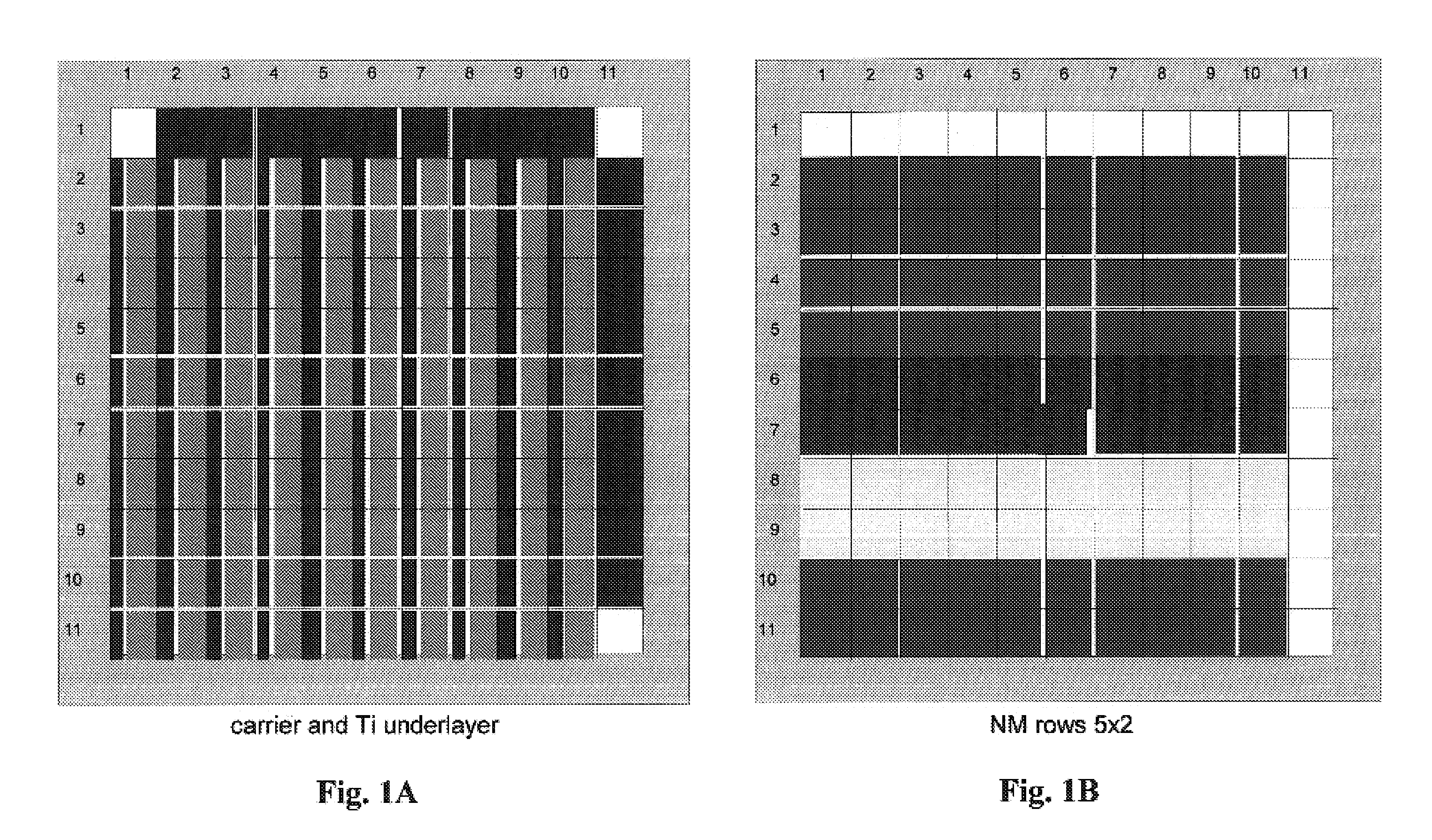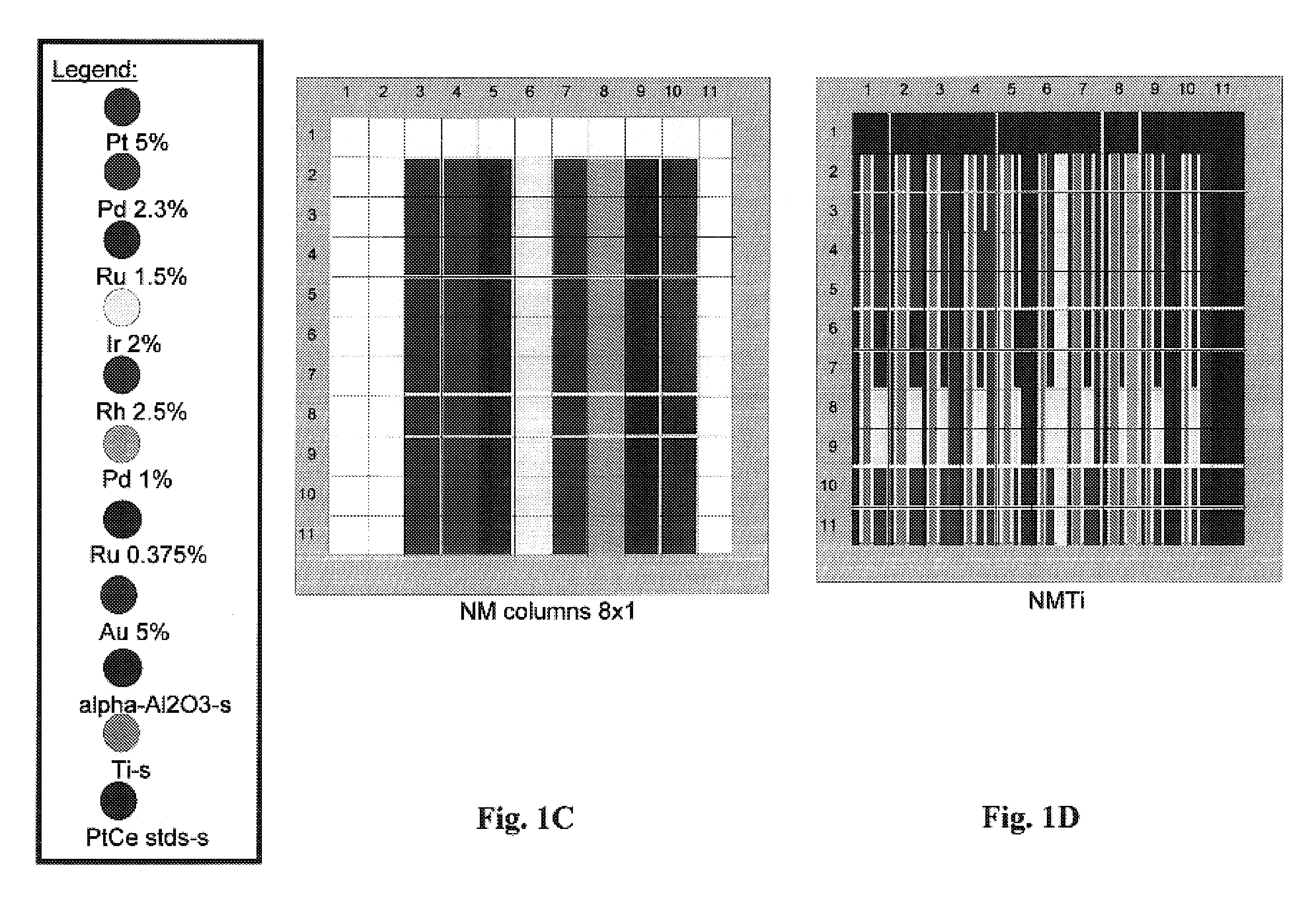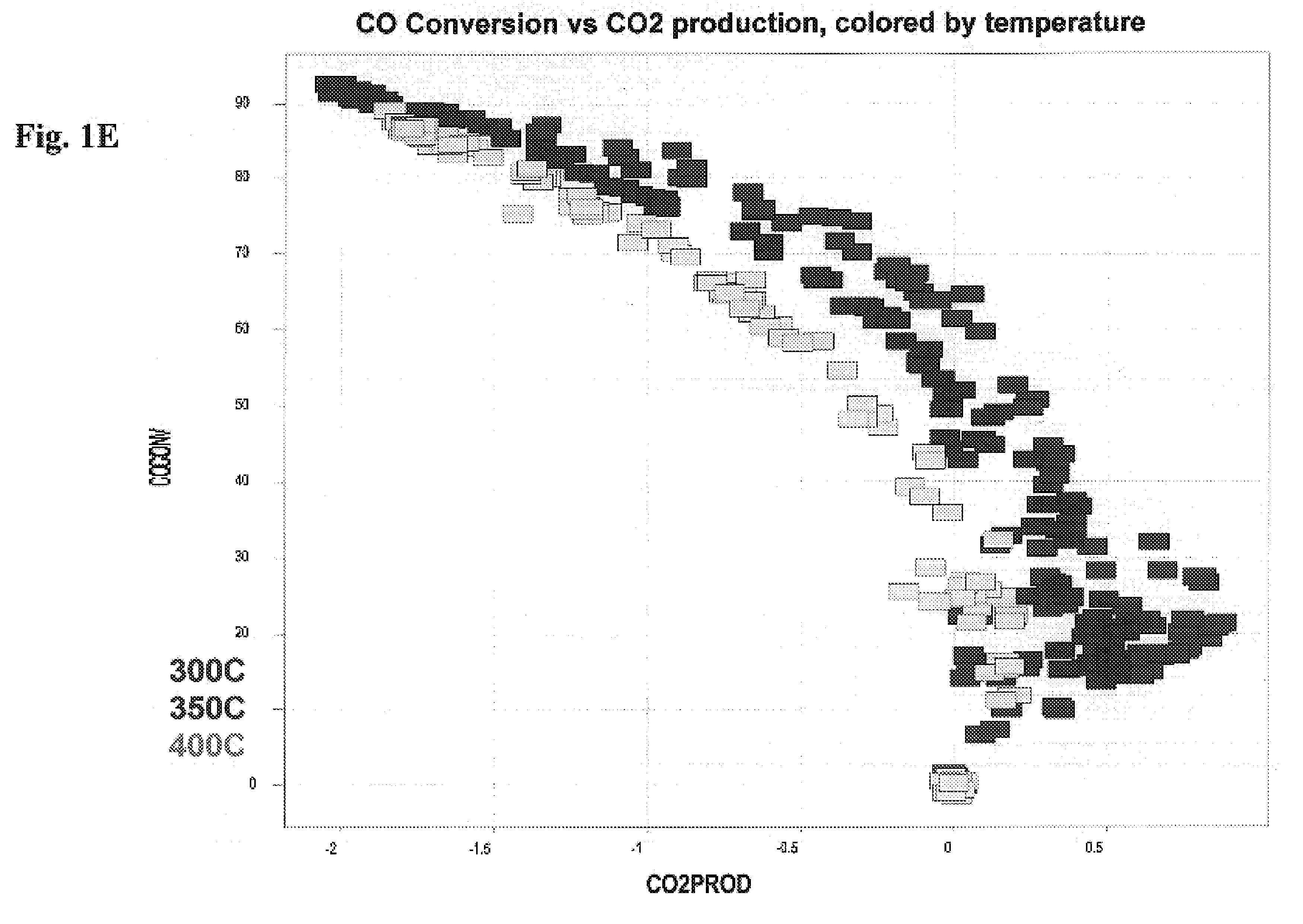Catalyst formulations containing Group 11 metals for hydrogen generation
a catalyst and group 11 technology, applied in metal/metal-oxide/metal-hydroxide catalysts, process and machine control, etc., can solve the problems of insufficient activity of existing catalyst formulations at low temperatures, inability to reach or even closely approach, and inability to achieve or even closely approach the activity of existing catalyst formulations, etc., to achieve highly active and selective wgs performance, the effect of improving the activity and selectivity
- Summary
- Abstract
- Description
- Claims
- Application Information
AI Technical Summary
Benefits of technology
Problems solved by technology
Method used
Image
Examples
example 1
[0212]An alpha-alumina precoated 3″ wafer was uniformly loaded with a Ti primer layer by liquid dispensing of 4 μL of a 0.71M Ti oxalate solution onto each element of an 11×11 well array. After drying, 5 noble metals were deposited in a second impregnation step in a 5×2 row format (2 rows for each noble metal, 4 μL dispense volume per well, 5% Pt, 2.3% Pd, 1.5% Ru, 2% Ir and 2.5% Rh stock solutions) on top of the Ti-preloaded wafer. After drying, 8 noble metal solutions (5% Pt, 2.3% Pd, 1.5% Ru, 2% Ir, 2.5% Rh, 1% Pd, 0.375% Ru, 5% Au) were deposited in a third impregnation step in an 8×1 column format (1 column for each noble metal solution, 3 μL dispense volume per well). Metal nitrates were precursors for palladium, rhodium and gold. Platinum diammine dinitrite, ruthenium nitrosyl nitrate and iridium hexachloride were also utilized as precursor solutions. See FIG. 1A through 1D.
[0213]The wafer was reduced in two steps, a first reduction in flowing 5% H2 / Ar in a tubular oven at 30...
example 2
[0215]A 4″ quartz wafer was precoated with ZrO2 carrier by repeated slurry dispensing of zirconia powder (Norton XZ16052 / MEI FZO923 / 01 70:30 mix) onto the wafer. The slurry was composed of 1 g zirconia powder in 4 mL of an ethylene glycol (“EG”) / H2O 50:50 mixture. A total of 6 μL of slurry was deposited in two 3 μL aliquots.
[0216]The zirconia carrier-precoated wafer was dried and then impregnated with a Ce layer by Cavro dispensing from a Ce nitrate stock solution vial directly onto the wafer (3 μL dispense volume per well). The wafer was dried and then uniformly coated with a Pt layer by Cavro dispensing from a Pt(NH3)2(NO2)2 stock solution vial (2.5 wt. % Pt) directly onto the upper half of the wafer. The wafer was dried and then impregnated with gradients of Pt. The Pt gradients were premixed in a microtiter plate by dilution of the Pt stock solution with water and then transferred from the microtiter plate to the lower half of the wafer by Cavro dispensing (3 μL dispense volume ...
example 3
[0221]A 4″ quartz wafer was precoated with zirconia carrier by repeated slurry dispensing zirconia powder (Norton XZ16052 / MEI FZO923 / 01 70:30 mix) onto the wafer. The slurry was composed of 1 g zirconia powder in 4 mL of a ethylene glycol / H2O 50:50 mixture. A total of 8 μL of slurry was deposited in two 4 μL aliquots.
[0222]The zirconia carrier-precoated wafer was dried and then impregnated with a five-point Pt concentration gradient (“5-point (“5P”) Pt gradient”) by Cavro dispensing from a Pt(NH3)2(NO2)2 stock solution vial (5 wt. % Pt) to a microtiter plate followed by transferring replicas (i.e. repeated daughtering) of the Pt solution onto the wafer (3 μl dispense volume per well, 45 replicas=45 identical 5-point Pt gradients on the wafer).
[0223]The wafer was dried and then impregnated with Rh by Cavro dispensing from a Rh nitrate stock solution vial (1% Rh) to a microtiter plate in a 5-point Rh gradient followed by transferring replicas of the 5P Rh gradient onto the wafer (3 μL...
PUM
| Property | Measurement | Unit |
|---|---|---|
| temperature | aaaaa | aaaaa |
| temperature | aaaaa | aaaaa |
| temperature | aaaaa | aaaaa |
Abstract
Description
Claims
Application Information
 Login to View More
Login to View More - R&D
- Intellectual Property
- Life Sciences
- Materials
- Tech Scout
- Unparalleled Data Quality
- Higher Quality Content
- 60% Fewer Hallucinations
Browse by: Latest US Patents, China's latest patents, Technical Efficacy Thesaurus, Application Domain, Technology Topic, Popular Technical Reports.
© 2025 PatSnap. All rights reserved.Legal|Privacy policy|Modern Slavery Act Transparency Statement|Sitemap|About US| Contact US: help@patsnap.com



